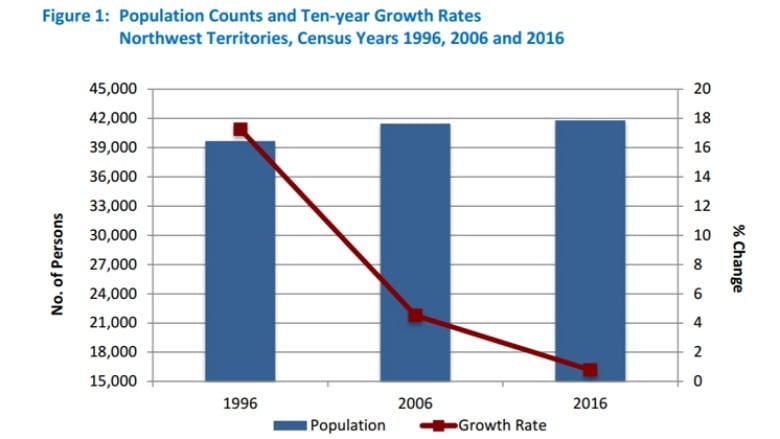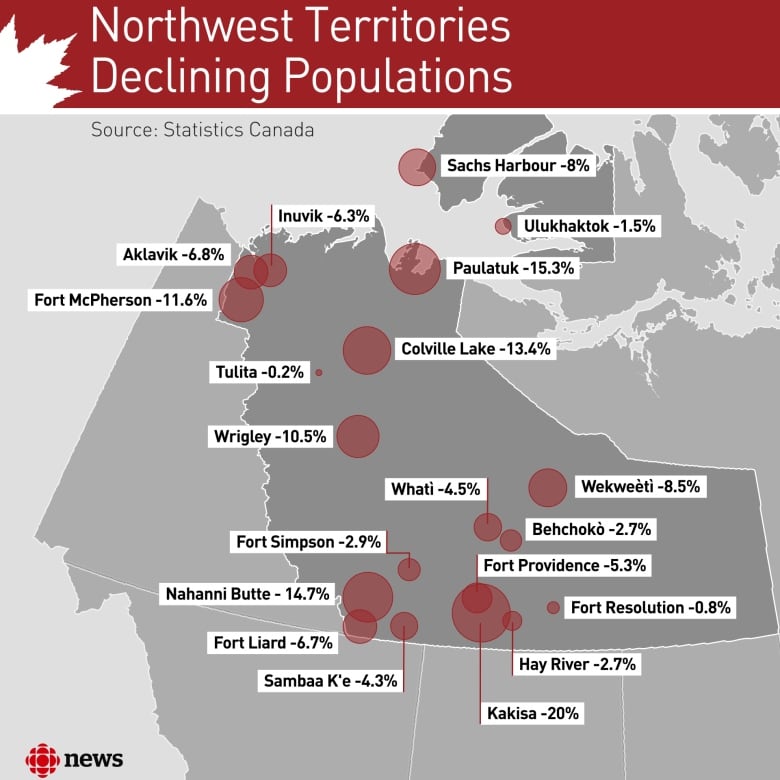N.W.T. communities shrink while Yellowknife grows in 2016 Census
Jobs and education are why people are leaving, say leaders, and could be key to drawing them back

Wilbert Firth isn't surprised to hear Fort McPherson, N.W.T., lost more than 10 per cent of its population in the last five years.
He says there's a simple answer why nearly 100 people left the community of 700 between 2011 and 2016, according to Statistics Canada data released Wednesday.
"It's jobs," he said. "Jobs and education. There are just seasonal jobs here. There were some on the highway, but after that was finished, some were able to work in the mines. But the governmentand First Nationis the main employer."
Firth, president of the Tetlit Gwich'in Council in Fort McPherson, says young people are unable to access post-secondary education and cannot find work.
Fort McPherson is one of 20 communities in the Northwest Territories that saw their populations decline in the past five years. Altogether, those 20 communities had a net loss of 760 people.

'You don't see nobody'
"You don't see nobody around here," Firth said. "They don't apply for programs. They give up. It's pretty dismal in these small communities."
Overall, the total population remained stable in the Northwest Territories between 2011 and 2016. Gains in other parts of the territory offset the losses felt in places like Fort McPherson.
Tsiigehtchic's population increased by 29 people, bringing it to 172 people. That's a 20 per cent increase compared to 2011. Gameti and Jean Marie River also saw growth. Gameti's population is at 278, up from 253 in 2011, and Deline's population reached 533, up from 472 in 2011.
Yellowknife, the territory's capital, saw a net increase of 335 new residents over the five-year period.
Migration between communities may explain the territory's stable population overall.
Hope with self-government
Joseph Kochon, band manager in Colville Lake, said he sees people leave for education, but sees them come back when their schooling is finished. Overall, Colville Lake had a net loss of 20 people in the last five years, about 14 per cent of its population.
He predicts an influx of new jobs when the community achieves self-governance within the next decade.
"We're encouraging education for our young people," he said. "We're going to need a workforce here and we're going to need our people to be educated."
For Firth, education is the key to keep young people in Fort McPherson. He wants to see education reform that get students into university programs or into skilled trades training. He also hopes he can leverage Fort McPherson's history to promote tourism.
"There's a lot of potential here," he said. "Especially if we go for self-government and expand on these key tourism industries. There's a lot of activity and potential for tourism."












_(720p).jpg)


 OFFICIAL HD MUSIC VIDEO.jpg)
.jpg)



























































































